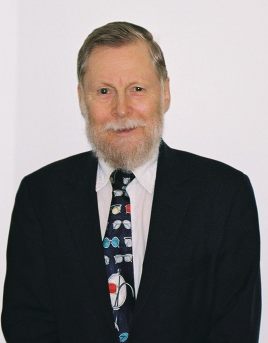Roger Moore (computer scientist) facts for kids
Quick facts for kids
Roger Moore
|
|
|---|---|
 |
|
| Born | November 16, 1939 Redlands, California, United States
|
| Died | March 21, 2019 (aged 79) Toronto, Ontario, Canada
|
| Citizenship | United States |
| Alma mater | Stanford University (B.S. Mathematics 1963) |
| Known for | |
| Awards |
|
| Scientific career | |
| Fields | Computer science |
| Institutions |
|
Roger D. Moore (born November 16, 1939 – died March 21, 2019) was a talented computer scientist. He was known for his important work in creating computer programs and networks. In 1973, he received the Grace Murray Hopper Award. This award was given to him and his colleagues, Larry Breed and Richard Lathwell. They earned it for their amazing work on a computer programming language called APL\360. Their work made computer systems simpler, faster, and more reliable.
Moore was also one of the people who started a company called I. P. Sharp Associates. He held a senior role there for many years. Before that, he helped create a program called SUBALGOL at Stanford University. He also wrote a program called ALGOL 60 for the Ferranti-Packard 6000 computer. Besides his work on APL, he played a key part in developing IPSANET. This was a special private computer network.
Contents
Early Computer Work at Stanford
Roger D. Moore was born in Redlands, California. Even before he graduated from Stanford University, he worked with computers. He was an operator for the Burroughs 220 computer. During this time, he helped with a system for card stunts. He also spent time studying a program called the Burroughs 220 BALGOL compiler. A compiler is like a translator that turns human-readable code into instructions a computer can understand.
In December 1961, Moore was hired to work on the SUBALGOL compiler. This program was for the IBM 7090 computer. Two other people, Braden and Breed, joined the team soon after.
After finishing SUBALGOL, Moore was hired by Ferranti-Packard. His job was to write an ALGOL 60 compiler for their FP6000 computer. This compiler was an important part of the software sold with the FP6000.
Building a Company and New Programs
In December 1964, many employees from Ferranti-Packard's computer team lost their jobs. Roger Moore, along with six other former employees, decided to start their own company. They called it I. P. Sharp Associates. Moore was a vice-president from the very beginning until he retired in 1989.
In 1966, Moore, Larry Breed, and Richard Lathwell started working on the APL\360 interpreter. An interpreter is a program that runs other programs directly.
The APL\360 program was very good at sharing computer time among many users. This was thanks to Roger D. Moore, who was mainly in charge of its "supervisor" part. This team's hard work earned them the Grace Murray Hopper Award. The award recognized their work on APL\360 for being simple, efficient, reliable, and fast for interactive systems.
In 1970, Moore became the leader of a project to create a COBOL compiler. Even though this compiler worked well, it wasn't widely used in the market.
I. P. Sharp Associates started offering APL time-sharing services in 1969. By 1975, the way they were connecting computers was becoming old-fashioned. Moore then became the main designer of IPSANET. This was a new type of computer network that used packet switching. This system was launched in North America and London in 1976.
In 1984, the company released Sharp APL for the IBM PC. This software included a special program called a 370 emulator. Moore wrote this emulator, which allowed the IBM PC to act like a much larger computer.
Life After Computers
After retiring from I. P. Sharp Associates in early 1989, Roger Moore found new interests. He became very interested in opera and chamber music. He not only attended many performances but also supported concerts. He helped fund new music pieces and advanced music education.
Music Pieces He Supported
Roger Moore helped fund the creation of many musical works.
- Dean Burry Sword in the Schoolyard (2016)
- Xiaoyong Chen Talking through Distance (2014)
- John Estacio Away and Awake in the Night (2013)
- Larysa Kuzmenko Piano Concerto (2002)
- Marjan Mozetich Scales of joy and sorrow (2007)
- Michael Oesterle Rambler Rose (2014)
- Norbert Palej Cloud Light (2013)
- Randolph Peters The Seven Gates of Kur (2000)
- Erik Ross Dark (2007)
- R. Murray Schafer Trio for Violin, Cello and Piano (2013)
- Nick Storring Gardens (2014)
Awards and Recognition
Roger D. Moore received several important awards for his contributions.

